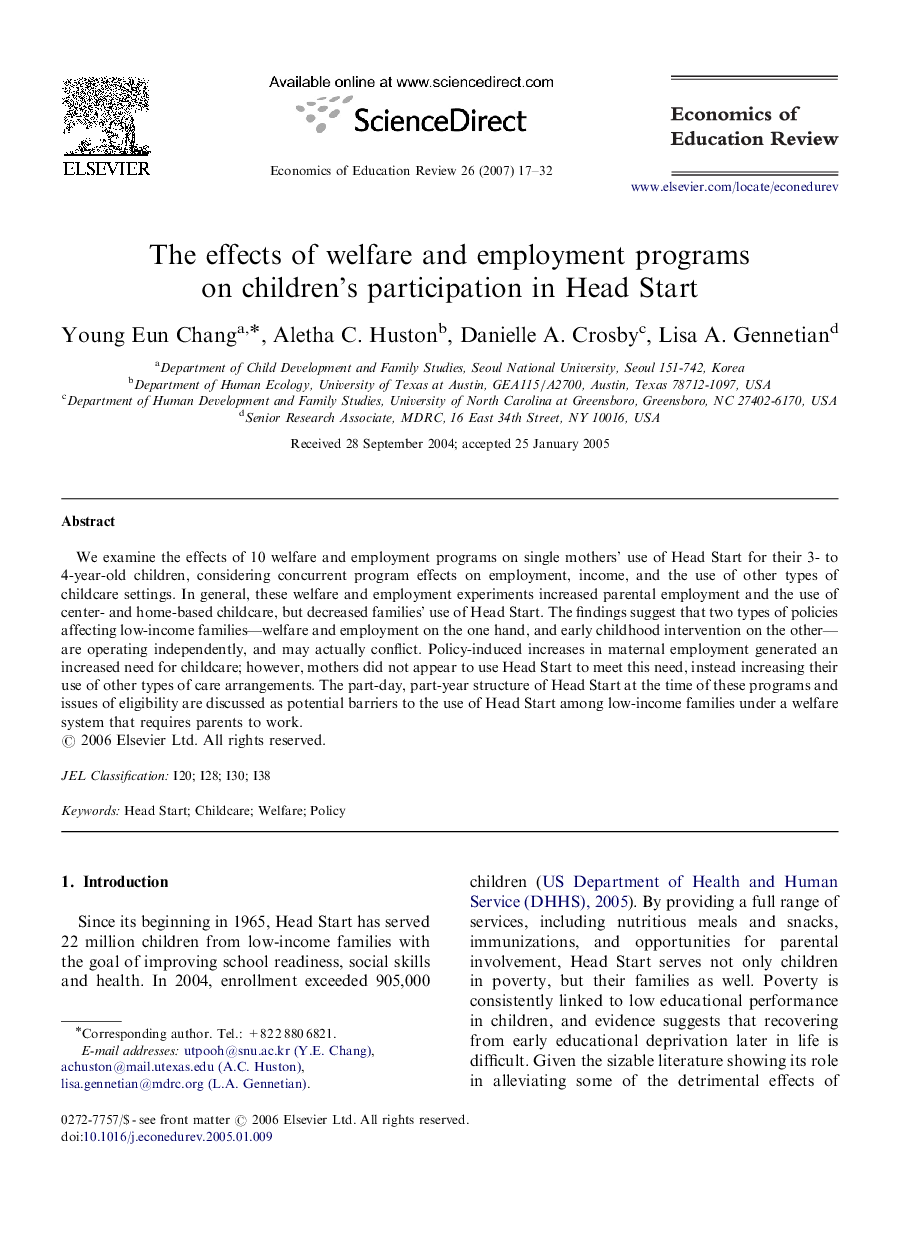| Article ID | Journal | Published Year | Pages | File Type |
|---|---|---|---|---|
| 355035 | Economics of Education Review | 2007 | 16 Pages |
We examine the effects of 10 welfare and employment programs on single mothers’ use of Head Start for their 3- to 4-year-old children, considering concurrent program effects on employment, income, and the use of other types of childcare settings. In general, these welfare and employment experiments increased parental employment and the use of center- and home-based childcare, but decreased families’ use of Head Start. The findings suggest that two types of policies affecting low-income families—welfare and employment on the one hand, and early childhood intervention on the other—are operating independently, and may actually conflict. Policy-induced increases in maternal employment generated an increased need for childcare; however, mothers did not appear to use Head Start to meet this need, instead increasing their use of other types of care arrangements. The part-day, part-year structure of Head Start at the time of these programs and issues of eligibility are discussed as potential barriers to the use of Head Start among low-income families under a welfare system that requires parents to work.
